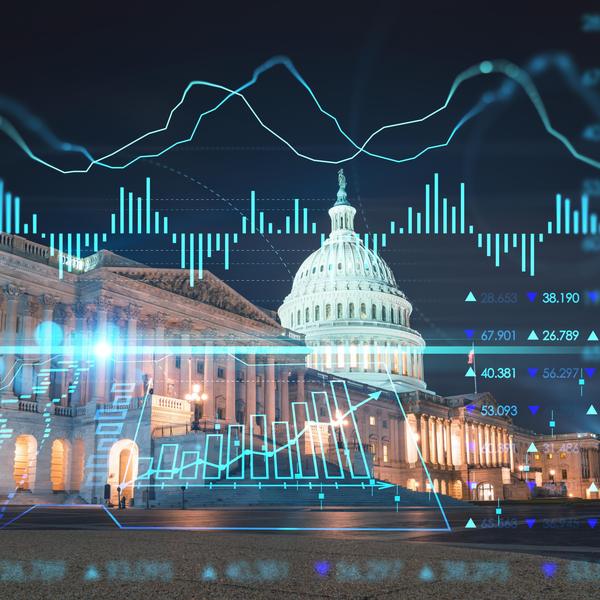The past year has witnessed a growing chorus of alarm in Washington regarding the military utility of space. From the proliferation of space debris to the hastened tempo of anti-satellite (ASAT) weapons development by China and Russia, there is a fear that U.S. space assets are held in peril by the threat of direct attack and the destruction of orbital usability. In November of last year, Chief of Space Operations General Chance Saltzman went as far as to designate China’s adoption of ASATs in 2007 as a key moment of inflection in the militarization of space.
These worries have a legitimate basis — scientists have posited that space debris has the potential to render certain orbital clouds such as low earth orbit (LEO) unusable through cascading collisions. ASATs only compound this risk, as even individual tests can generate thousands of pieces of debris. Further, LEO and other orbits are a vital terrain for U.S. military satellites, whose uses range from communication to positioning systems and intelligence collection. This led the Biden administration to adopt a unilateral moratorium on ASAT testing in 2022.
While limiting testing is necessary and prudent, it has done little dissuade testing or proliferation of ASATs. For one thing, in the short termism of contemporary armed conflict, the ability to eliminate space-based command and control architecture and other systems, particularly those of an adversary operating far from their shores, confers a powerful rationale in favor of ASAT use in war. Because of this, there is little to motivate Chinese and Russian action towards disuse absent a wider, multi-national negotiation.
This contention is well documented and understood in Washington, as well as in Beijing and Moscow. What American national security planners seem to understand less well is that the current trajectory of ASAT proliferation does not start abroad but at home.
In the hubris of the unipolar moment, when much of the multilateralism that undergirded the official if imperfect and uneasy peace between the U.S. and USSR was traded in favor of muscular interventionism, the root cause reemerged. Indeed, insofar as the current ASAT problem can be understood as an arms race, it is a second iteration of the old Cold War problem of competing logics of deterrence and anti-ballistic missile (ABM) technology.
As soon as the missile age dawned with the launch of Sputnik aboard a Soviet R-7 rocket, methods for countering ballistic missiles entered development. While many of these early programs like Nike Zeus were fraught with technical limitations, a fear emerged that successful ABMs would undermine classical nuclear deterrence and promote preemptive nuclear use should one power or the other gain a protective ABM curtain. These fears eventually lead to the U.S. and USSR ratifying the Anti-Ballistic Missile Treaty in 1972, under which each country was limited to one ABM site per country.
To understand why this is the case it is first necessary to understand where the overlap between ABM and ASAT weapons systems exists. Not all ABMs can be used in an ASAT role. This is particularly true of point-defense ABM systems intended to intercept missiles in their terminal phase or those used to intercept shorter range missiles where less of the flight takes the missile outside the atmosphere. However, some other ABMs are capable of striking missiles in their midcourse phase in space. For these weapons, minor adjustments can be made to be used in an ASAT role and vice versa. Consider the U.S. Standard Missile 3 (SM-3), which has successfully engaged both missiles and satellites in kinetic testing.
Because of this overlap, the development of direct-ascent ASATs that overlap with ABMs have been governed by the same regulations as ABMs. Direct ascent ASAT development largely fell by the wayside following the ABM Treaty’s ratification, and other systems like directed energy weapons were technically infeasible.
Despite this, a coalition of hawkish anti-communists working in defense policy and academia mounted concerted opposition to the ABM treaty. Much of the opposition coalesced in think tanks like the Hudson Institute and Heritage Foundation, whose members helped serve as the intellectual primogenitors of the Reagan administration’s Strategic Defense Initiative (SDI). While technologically fantastical at its time, the enduring legacy of SDI proved more ideological than material, as the rejection of deterrence in favor of active defense gained ground as a cornerstone of neoconservative national security policy in the 1980s and 1990s.
These voices would go on to exploit U.S. preeminence following the end of the Cold War to land a fatal blow to the ABM Treaty. Following concerted efforts from these same think tanks and others, including the Project for a New American Century and the Center for Security Policy, in 2002 the Bush administration finally withdrew from the ABM treaty, which coincided with a dramatic expansion of ballistic missile defense (BMD) architecture in the U.S. military and amongst foreign powers.
It is no mistake that the contemporary problem of ASAT proliferation followed in the years immediately following the end of the ABM treaty. Much like ABMs, development of ASATs stalled during the Cold War due to technical limitations. However, with the dubious legal basis of ASATs as ABM-adjacent weapons eroded, U.S. development of ASAT capabilities quickly escalated, culminating in the Burnt Frost test in 2008.
That other countries would follow this trajectory is hardly escalatory on their part, but U.S. concern stems from the fact that ASATs necessarily privilege belligerents for whom space based command and control is less essential. Considering that most of the global hot points for renewed great power competition are far flung from American shores, U.S. defense planners are now left to reckon with a hell of their own making, or perhaps more accurately a hell of their predecessors’ making. In a quest for preeminence, the U.S. unwittingly created a threat environment that advantages those it considers current or potential near peer adversaries. The shadow of the ABM Treaty withdrawal, as with much of U.S. policy misadventure, is an unforced error that now holds in peril significant military and civilian space-based infrastructure.
Laudable as U.S. efforts to minimize the impact of its own ASAT testing is, the heightened tensions between the world’s major powers invalidate unilateralism as a solution. Instead, to minimize the risk of ASATs, both to U.S. security and to the globalized world that relies on the peaceful employment of space, diplomacy remains the only path to success.
Mutual risk mitigation necessitates compromise; Russia and China are unlikely to cede the wartime advantage of ASATs absent a framework that preserves stasis for all involved. Perhaps here there is a silver lining to the demise of the ABM Treaty: the hope that in the void it leaves, a more permanent, global settlement can be reached before the threat reaches the levels of nuclear proliferation. As more powers push to acquire ASATs, the strategic imperative for their adoption grows, and with it the risk. The only hope to curb this state of affairs before it crosses a threshold of unacceptable destabilization is a lasting framework for disuse, one that can only come from negotiation, compromise, and cooperation.
















